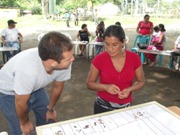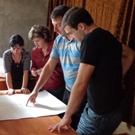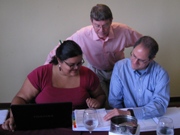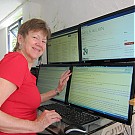Jumpstart Your 1st Project: 4 Powerful Steps to Design-Fund
Earlier this year we looked at the first four steps in designing successful, sustainable, impact oriented projects.
 |
In this newsletter we look at how facilitating a needs assessment with your community can lead to a better understanding of needs, their underlying causes, and can lead to long-term project sustainability.
Different types of organizations will need to conduct needs assessments that range from very simple to highly sophisticated. I include a range of guides where you can select one that would be most appropriate for the level of sophistication needed for your organization.
|
| How To Design Your Non Profit Project Using the Results of Your Needs Assessment | |
 |
In this newsletter we look for solution oriented activities for designing programs to solve the problems in the problem tree developed during the needs assessment.
First, we identified potential solution oriented activities. We wrote out a list of the needs and challenges from last week’s assessment with space in between each one. Then we researched solution-oriented activities to each of the underlying causes. Our search uncovered scientific papers, articles, handbooks and manuals.
|
 |
This week’s newsletter is for determining through scientific research if your initial ideas for activities have shown evidence of having worked to solve your community’s needs and challenges. We’re looking for evidence based best practices.
Investigate if there is a scientific basis that your proposed theory and activities have worked on other projects. Suppose that you are a mother whose children are suffering, and an unknown organization came to you with a plan to help your children. Wouldn’t you want that plan to work?
|
| Fast Logframe for Project Funding & Management | |
 |
In this week’s newsletter we’re going to take your problem statement, project outline and goal statement, and place them in a simplified matrix: this the first step in building a logical framework.
This will only take 30 minutes to do but you will be able to see an immediate change in the organization of your project. It will also make your project more presentable to a donor—and much easier to develop management documents like budgets and schedules.
|
Facilitating a needs assessment with community members gets right to the underlying causes of the challenges they face—and develops a sense of ownership on their part. For example, at the Church of the Holy Apostles in Manhattan, volunteers serving lunch at their soup kitchen are themselves homeless.
Please note:
This week’s exercise is part of the process for developing a project design is for a course I teach called OL 201: Designing and Funding Non Profit Projects. The first two assignments in 201 include detailed instructions for conducting a live needs assessment, finding specific resources that you will need for conducting the assessment, an example of a completed assessment, and a project concept based upon the results. The third assignment leads you through the process of finding evidence based best practices. The fourth assignment provides simple steps to developing a logframe.
I hope that you enjoyed this. If you have a question don’t hesitate to contact us.
Sincerely,
Tim Magee

